Myobrace® for Kids Stage 3 - K3
Finalise alignment, habit correction and retention
The K3 focuses on final alignment of the teeth while retaining the arch form, breathing and myofunctional habits. It is the firmest appliance in the series, designed to provide the best retention of arch form and habits. By this stage of treatment, patients' teeth will be mostly aligned and, therefore, the K3 can be used to finalise any remaining mild malocclusion. Move to the Myobrace®for Teens series if further treatment or retention is required in the developing permanent dentition.
Design Features
The design features of the K3 are suited to finalise dental alignment, while retaining arch form, breathing and myofunctional habits in the mixed dentition.
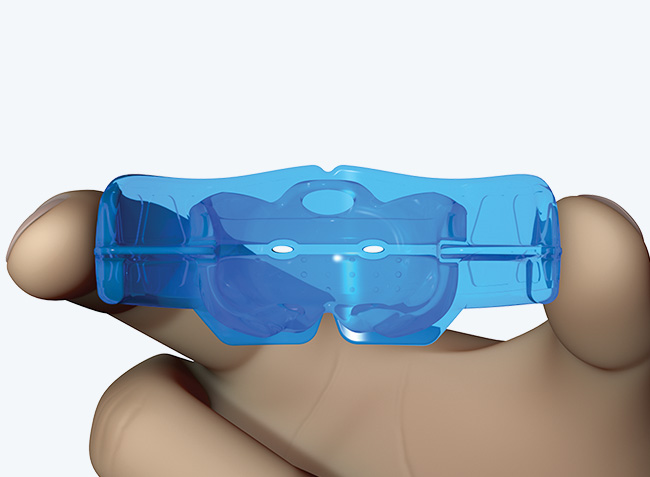
Firmest material
maintains the arch form and habits while finalising any remaining dental alignment.
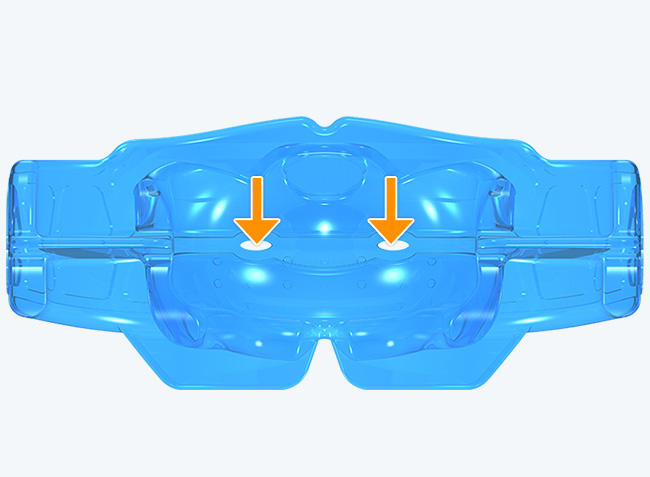
Small breathing holes
help to establish nasal breathing.
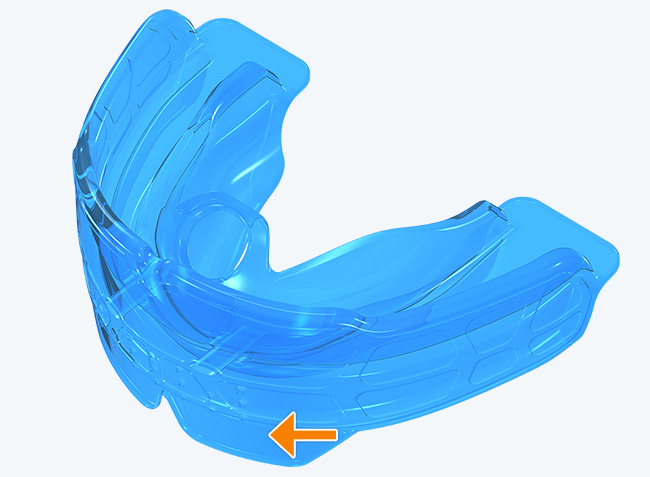
Lip bumper
discourages overactive lip muscles during a reverse swallow.
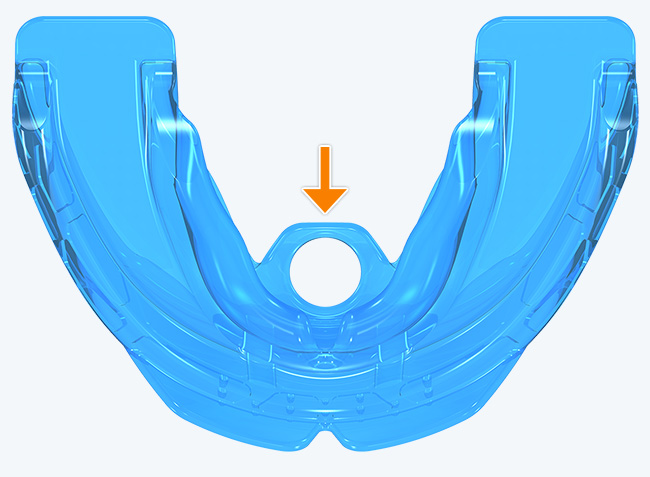
Hollow tongue tag
encourages correct tip of the tongue positioning.
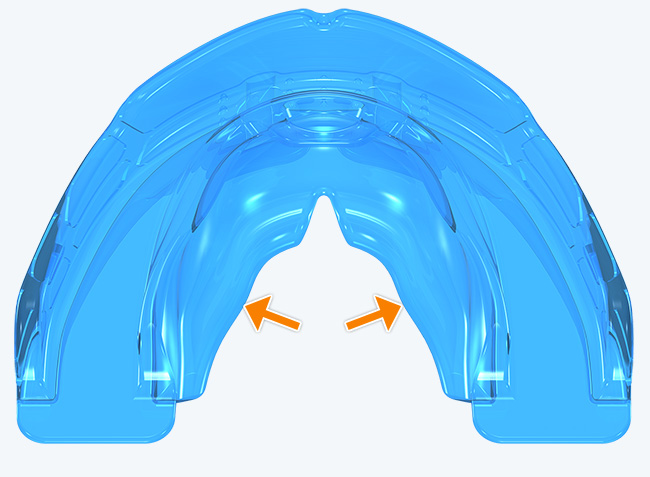
Tongue elevator
encourages the body of the tongue to rest in the roof of the mouth.
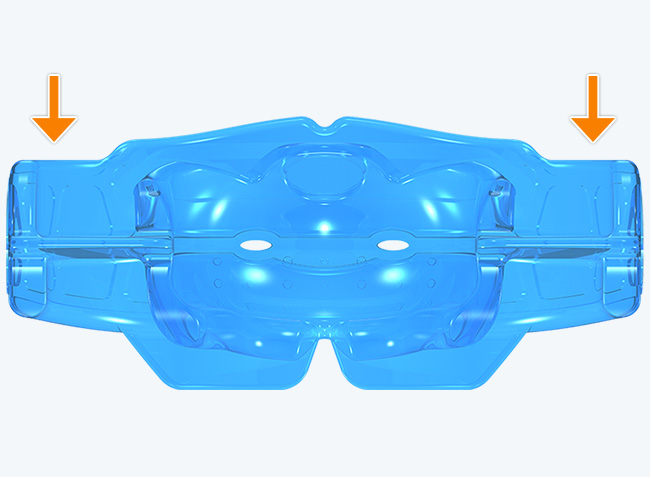
High sides
hold the soft tissues away, promoting arch development while optimising appliance retention.
Directions for Use
The Myobrace® appliance is to be used for one to two hours each day, plus overnight while sleeping. The patient's teeth may become slightly sensitive in the early stages of treatment. This is quite normal, however, if pain becomes excessive, decrease application time with the aim to build it back up once the appliance is accustomed to and sensitivity subsides.
Step 1
Hold the Myobrace® with the tongue tag facing up.
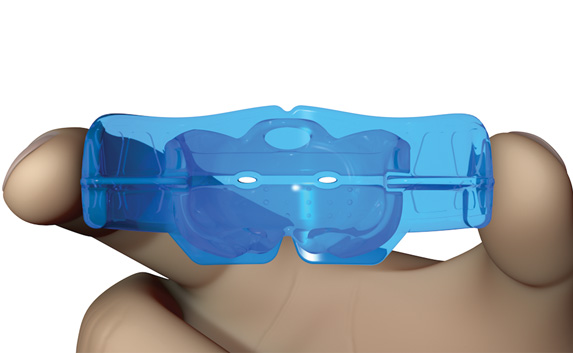
Step 2
Place the Myobrace® into your mouth.
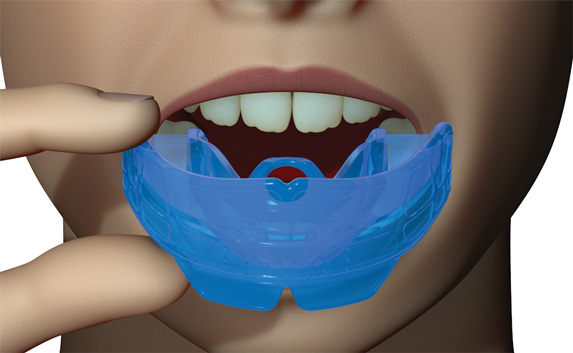
Step 3
Keep your tongue positioned on the tongue tag.
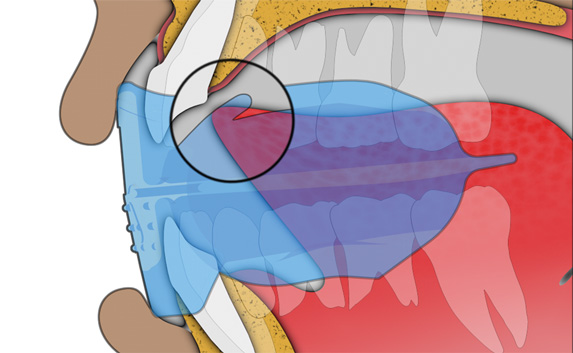
Step 4
Close down on the Myobrace® and feel it working to align your front teeth and jaws.
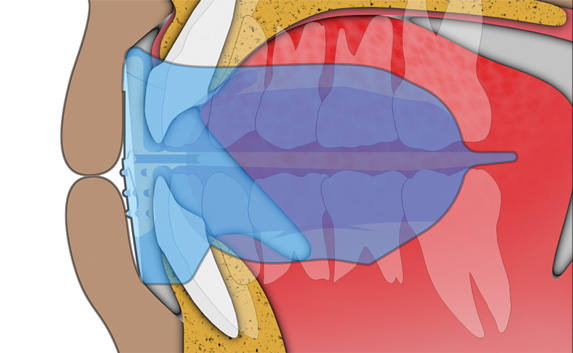
Step 5
Keep your lips together and breathe through your nose.
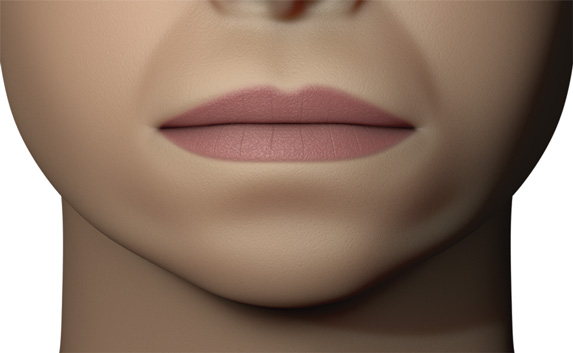
Cleaning the Appliance
The Myobrace® appliance should be cleaned under warm running water every time the patient removes it from their mouth.
Use Myoclean™ tablets to thoroughly clean twice a week. Myoclean™ is the recommended cleaning agent for all MRC appliances.
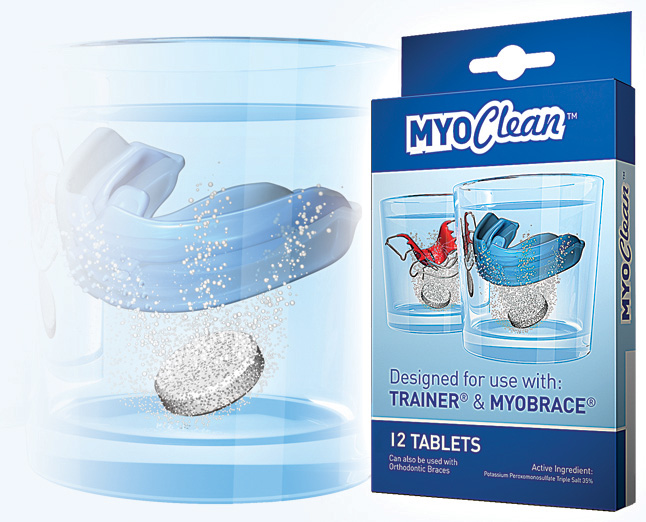
Case Studies

Case Study 1
This eight-year-old female patient presented with the chief complaint of wanting early treatment to address her open bite. After being presented with the various treatment options, the decision was made to undertake Myobrace® treatment, involving the use of a series of Myobrace® appliances in conjunction with the BWS arch expansion appliance and the Myobrace® Activities.

Pre-treatment
Using the Myofunctional Orthodontic Evaluation (MOE), we recorded that she had a severely narrow upper arch with an anterior open bite. The patient had a history of thumb sucking, resulting in the tendency to breathe through her mouth while sleeping, low tongue posture, and an incorrect swallow pattern. Since she was in the mixed dentition, her treatment began with the Myobrace® for Kids series.
Dental Progression
She started with the K1 appliance to establish nasal breathing and begin the correction of myofunctional habits. Three months later, her breathing function had improved and she was consistently retaining the K1 overnight, so she progressed onto the K2 appliance which focuses on arch development and continued habit correction. You can already see the improvement in the upper arch form and reduction in anterior open bite after only three months of treatment, a result of correcting tongue position and function. Once the anterior open bite was largely closed, the decision was made to use the BWS to enhance the development of the upper arch and create more room for the tongue, so the K1 was reissued to the patient.
Dental Progression
After four months of BWS expansion, the wire was removed and the T4A® appliance was issued. Usually we would have issued the K2 appliance in this instance, but the patient found the T4A® to be more comfortable. After eight months of wearing the T4A® and continuing to work through the Myobrace® Activities, she was then issued the P-3® appliance (as she had an edge-to-edge tendency), and then has continued to use the P-3® as her retention appliance.
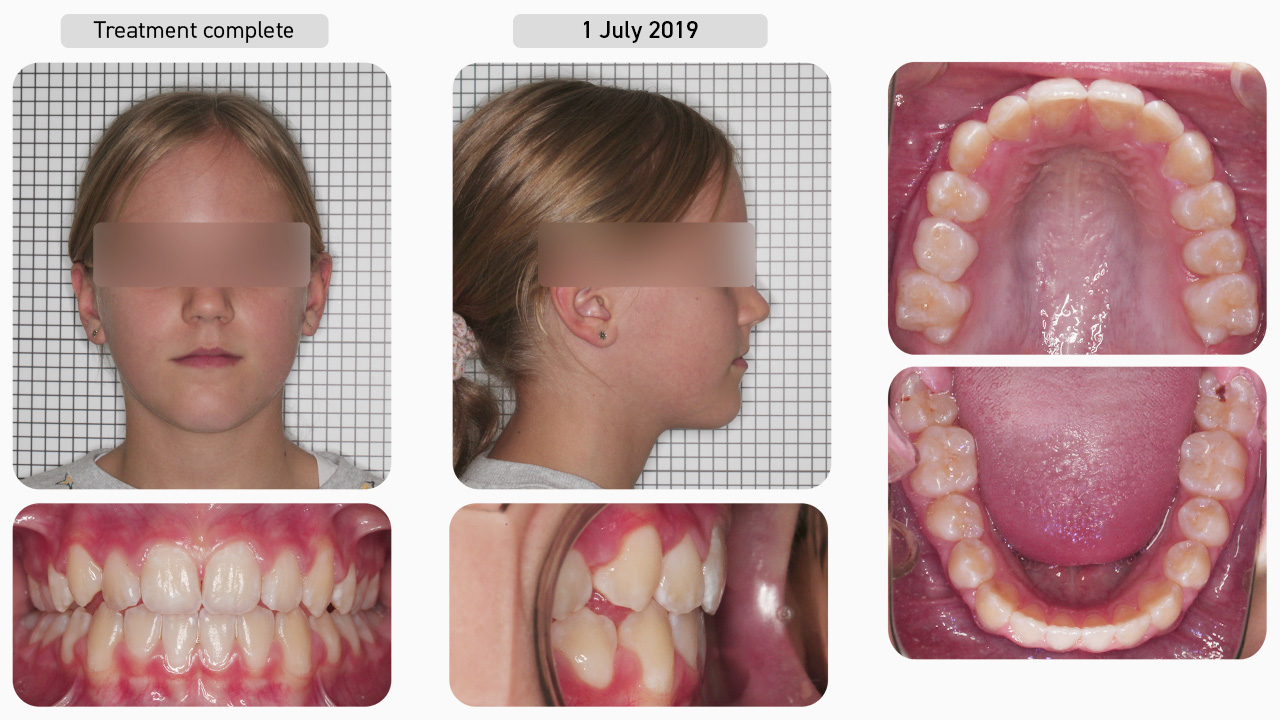
Treatment Complete
Once the goals of Myobrace® treatment have been achieved (correction of breathing and myofunctional habits, arch form and dental alignment), the patient enters into the retention phase. Usually we would issue the T4 at this stage, but since the patient has an edge-to-edge tendency, we chose the P-3® appliance to retain the arch form, alignment and habits, ensuring that she continues to develop correctly.
Facial Progression
Once breathing and myofunctional disorders have been corrected, the development of the face continues in the correct downward and forward direction. The anterior open bite has closed and the narrow upper arch has widened, giving the patient a nice broad smile. This is the result of establishing nasal breathing and correcting both the tongue posture and her thrust swallow pattern. With good breathing and muscle function established, we expect the patient’s remaining development to continue in a favourable manner.
Treatment Summary
Using the Myobrace® appliances in conjunction with the BWS and the Myobrace® Activities, we have helped the patient to establish nasal breathing, correct her myofunctional habits and, therefore, achieve natural closure of the anterior open bite and correction of the arch forms. With the correct breathing and muscle habits maintained, we expect the face and teeth to continue to develop in the right direction, with good stability of the result into the future.

Case Study 2
This seven-year-old male patient presented with the chief complaint of crowded teeth, incorrect jaw development and nocturnal bruxism. His parents wanted to avoid extractions and braces after both having undergone this treatment themselves as teenagers, with poor long-term outcomes. After being presented with the various treatment options, the decision was made to undertake Myobrace® treatment, involving the use of a series of Myobrace® appliances in conjunction with the BWS arch expansion appliance, and the Myobrace® Activities.
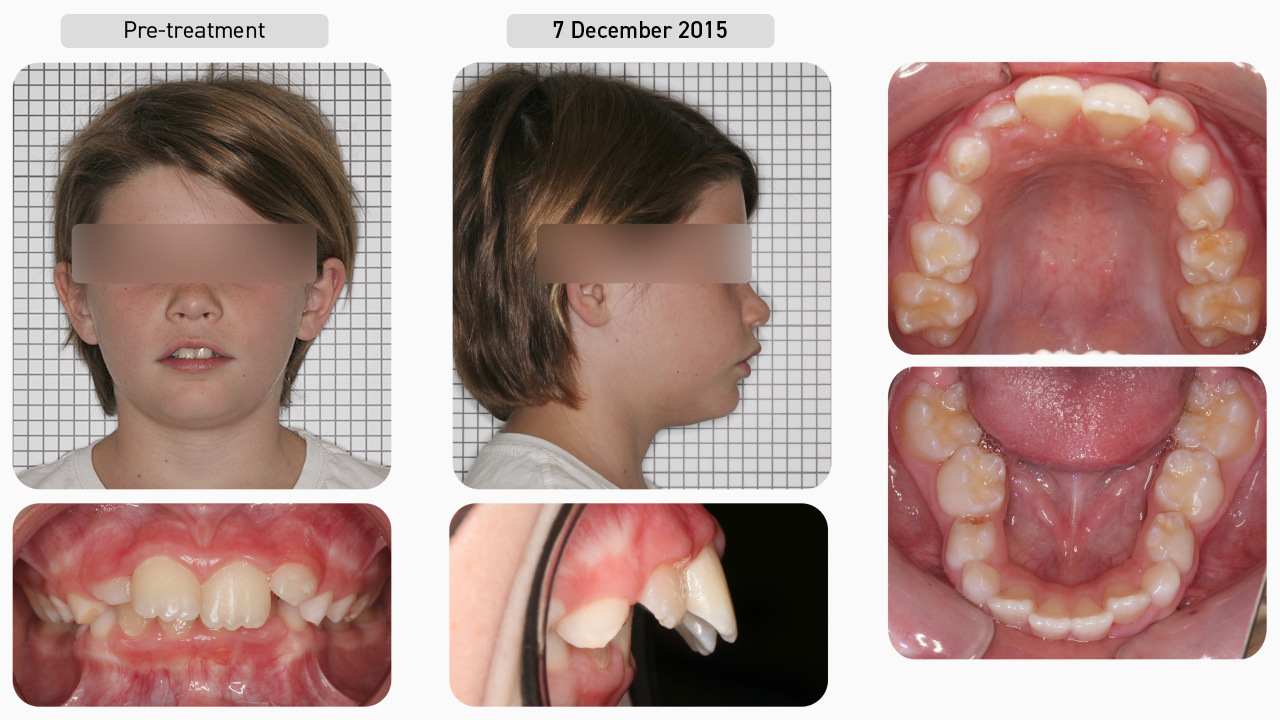
Pre-treatment
Using the Myofunctional Orthodontic Evaluation (MOE) form, we documented that this patient had underdeveloped jaws with moderate dental crowding. There is a narrow upper arch, severely hourglass-shaped lower arch, deep bite and increased overjet. This patient was a mouth breather with a lip trap, low tongue posture and reverse swallow. Since he was in the mixed dentition, his treatment began with the Myobrace® for Kids series.
Dental Progression
He started with the K1 appliance to establish nasal breathing and begin the correction of myofunctional habits. Less than two months later, his breathing function had improved and he was consistently retaining his K1 overnight, so he progressed onto the K2 appliance to focus on arch development and continued habit correction. To enhance development of the upper arch, the decision was made to use the BWS arch expansion appliance, and the patient was issued the T1BWS appliance, which is the preferred appliance to use with the BWS. This was combined with Myolay™ to ‘unlock’ the upper teeth from the lower teeth and allow the narrow arches to develop to their fullest potential.
Dental Progression
This patient needed multiple rounds of BWS expansion, so the wire was removed for a few months to let the teeth settle. With the wire removed, the patient was issued the T2 appliance now that he was in the developing permanent dentition, before refitting the wire for a second round of expansion. Because the BWS must be combined with first stage appliance, the patient was reissued the T1BWS appliance. Once the second round of expansion was complete, the wire was once again removed, and the patient was issued the T4A® appliance.
Dental Progression
At this stage, the arch forms were broad and round and the crowding had resolved, however, occlusion was not ideal due to residual muscle dysfunction. The patient was issued the P-3® appliance while he continued working through the Myobrace® Activities to correct his poor myofunctional habits. Six months later, his muscle dysfunction was corrected, and a good occlusal relationship of the teeth was established, so he was issued the T4 appliance for retention. The patient returned for a retention check appointment more than a year later and the result had been maintained. At this point, we would normally start to wean the patient off the Myobrace®, however, this patient reported that he preferred to continue wearing an appliance as he had gotten used to it and found that he slept better when he wore his Myobrace®. So, the patient was issued the T4A® appliance, ideal for long-term wear.
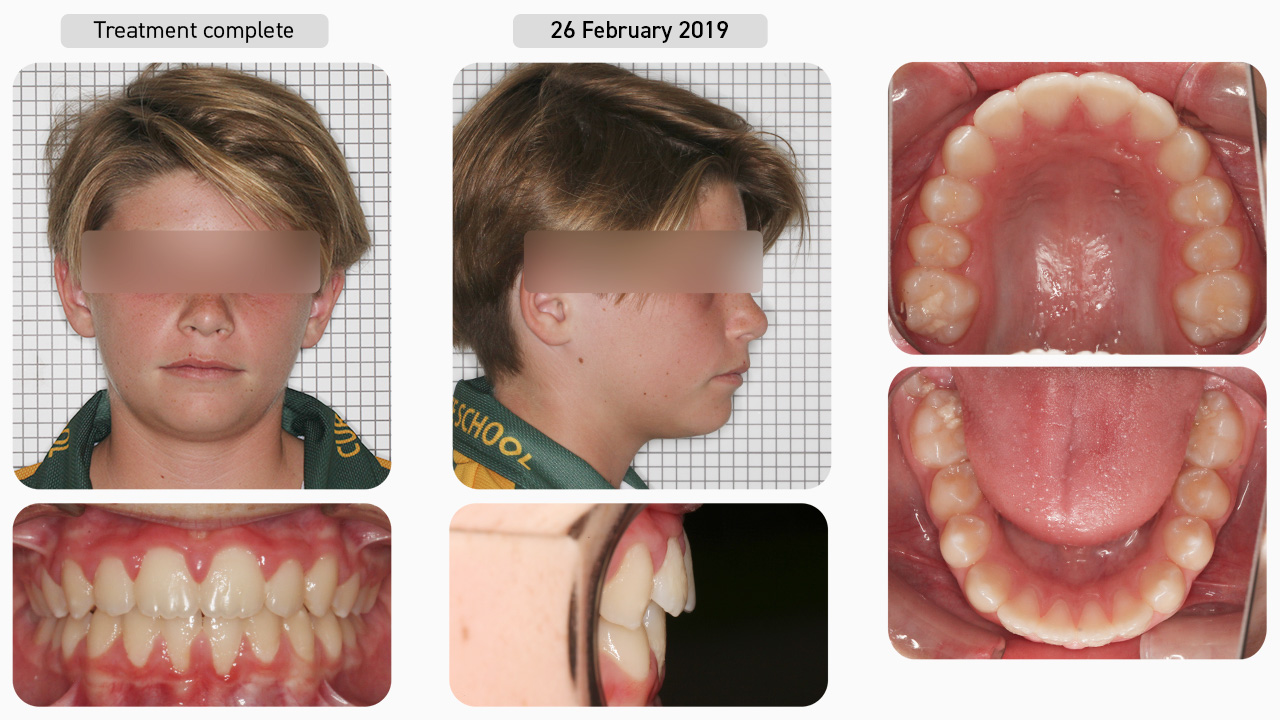
Treatment Complete
Once the goals of Myobrace® treatment had been achieved (establish nasal breathing, correct the poor myofunctional habits and attain good arch forms), the patient was entered into the retention phase. This involved the use of the T4 appliance to retain the arch forms, alignment and corrected habits, allowing him to continue to develop correctly.
Facial Progression
Since the breathing and myofunctional disorders have been corrected, improvements can be seen in the development of the face. The lip trap has been corrected and the patient is now exclusively nasal breathing. As a result, the midface and lower face have developed forwards and the airway has also improved. The buccinators have reduced in size and the lips are resting together more comfortably as a result of correcting function.
Treatment Summary
Using the Myobrace® appliances in conjunction with BWS arch expansion and the Myobrace® Activities, we have helped this patient to establish nasal breathing, correct his poor myofunctional habits and, therefore, achieve natural alignment of the teeth. The arch forms have improved significantly and the deep bite and increased overjet have resolved. Most importantly, the patient is no longer bruxing during sleep. With the correct breathing and muscle habits established, we expect good stability of the result ahead.

Retention
The patient returned for a retention check appointment approximately one and a half years after treatment was complete and the result has been maintained. The permanent dentition has erupted into well-developed arches and the jaws have developed in the right direction, resulting in a much-improved facial profile. With the breathing and myofunctional habits corrected, the patient is also now breathing and sleeping better.
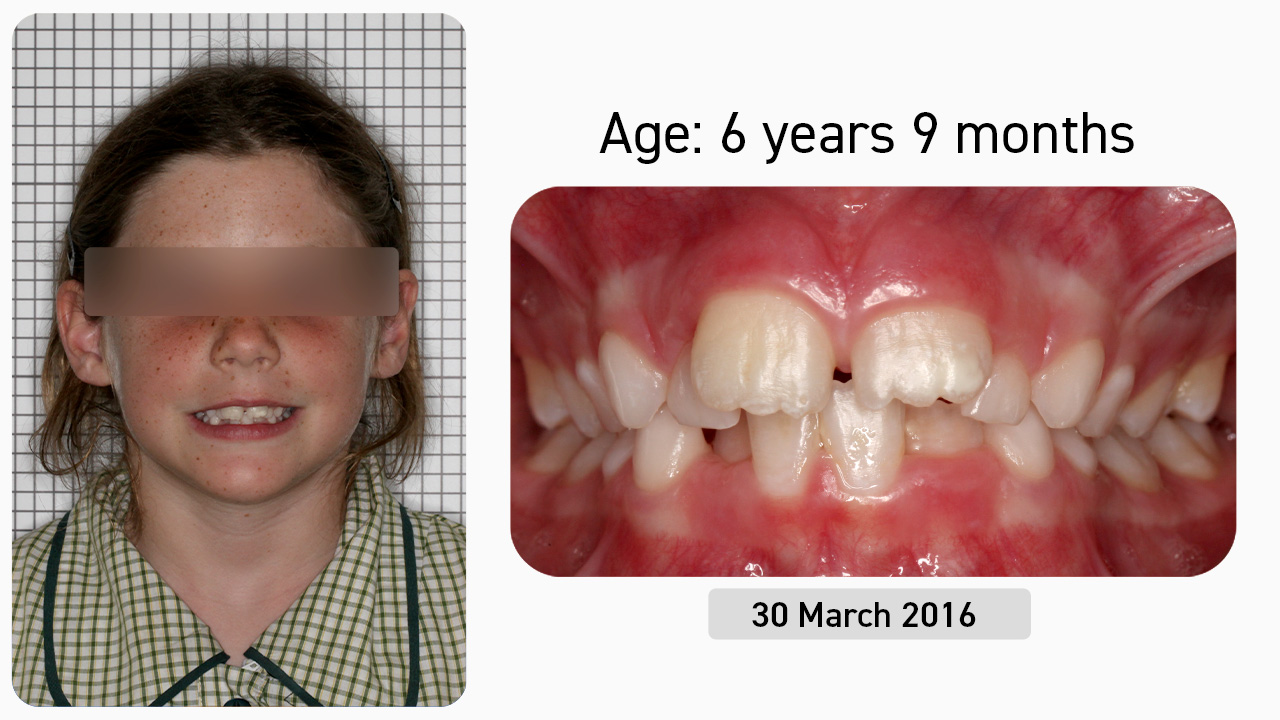
Case Study 3
This six-year-old female patient presented with the chief complaint of crowded teeth, incorrect jaw development, noisy breathing during sleep and wanting to avoid braces. After being presented with the various treatment options, the decision was made to undertake Myobrace® treatment which involved the use of a series of Myobrace® appliances, the Myobrace® Activities and, given the severity of the presenting malocclusion, the use of the BWS arch expansion appliance.
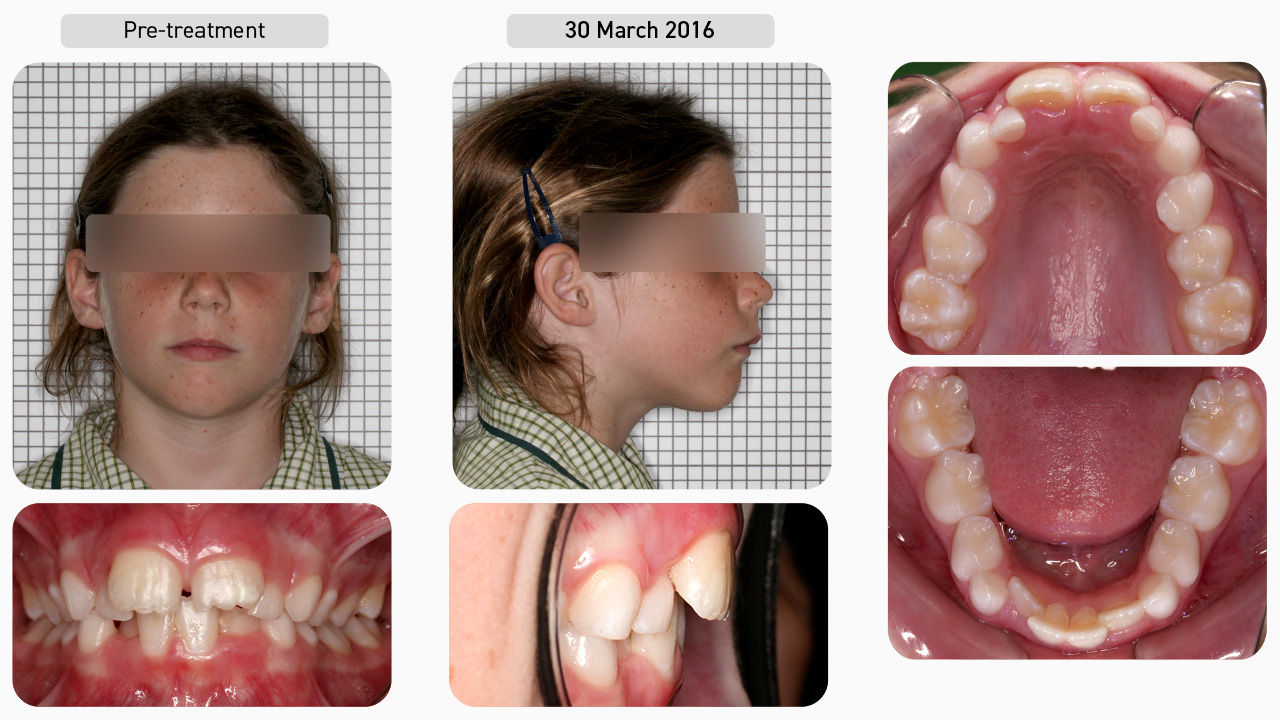
Pre-treatment
Using the Myofunctional Orthodontic Evaluation (MOE) form, we documented that this patient had underdeveloped jaws with moderate to severe dental crowding. The upper and lower arch forms are particularly narrow with lack of space to accommodate the permanent lateral incisors. Her poor myofunctional habits included mouth breathing with low tongue posture and a reverse swallow. Since she was in the mixed dentition, she was treated with the Myobrace®for Kids series.
Dental Progression
She started with the K1 appliance to begin the correction of myofunctional habits and establish nasal breathing. After two months, her breathing function had improved and she was consistently retaining her K1 overnight, so she progressed to the K2, which focuses on arch development and continuing habit correction. Due to the severe crowding, a BWS was used to enhance arch development and the K1 was reissued as the BWS must be used in conjunction with a first stage appliance.
Dental Progression
After three months of expansion with the BWS, the wire was removed, and the K2 appliance was reissued. Note the temporary increase in overjet due to development of the upper arch (this is favourable). The patient remained in the K2 appliance for the majority of treatment while continuing to work through the Myobrace Activities® to correct her myofunctional habits. Once her myofunctional habits were largely corrected, the patient was issued a T3 appliance for further dental alignment, and then the T4 appliance for retention.
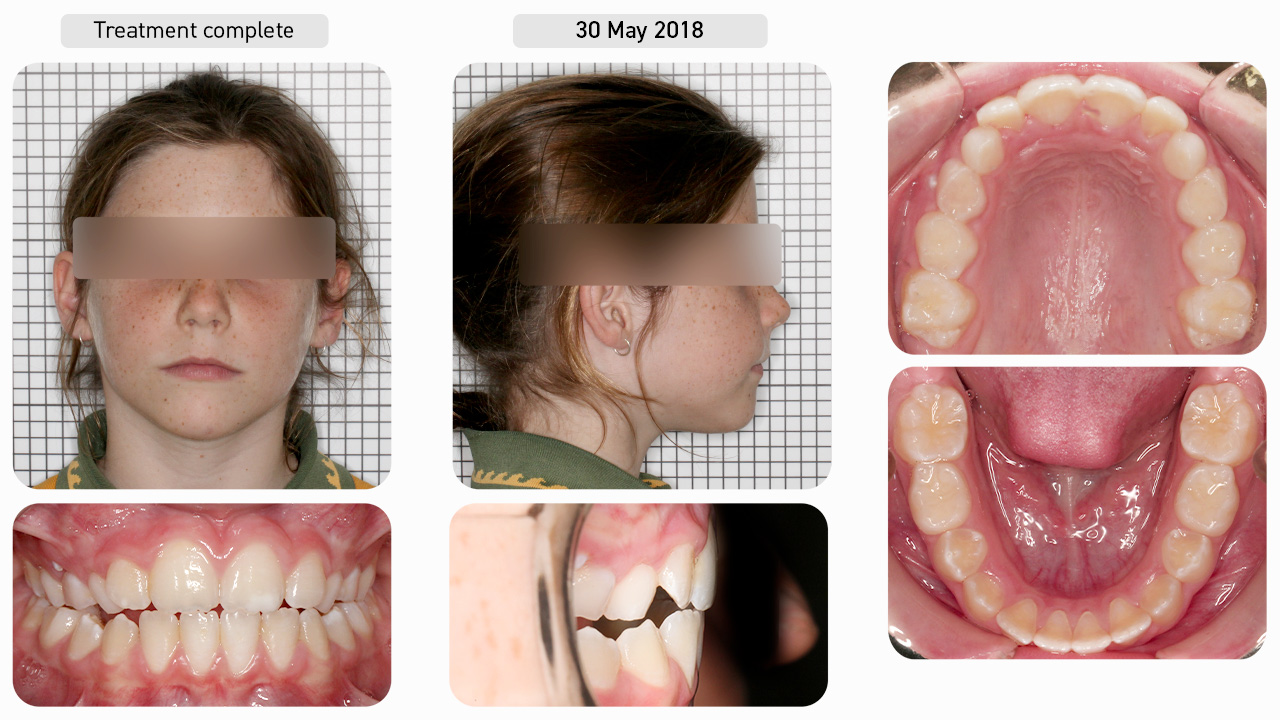
Treatment Complete
It’s important to note here that despite the significant improvements achieved at this point, there is still some minor malocclusion remaining. In Myobrace® treatment, this is not a concern because, with the improved breathing and correction of myofunctional habits, we expect the teeth and jaws to continue to improve over time. We are not concerned with dental ‘perfection’ as we are seeking to achieve natural alignment of the teeth and jaws, which occurs over time in the presence of good breathing and muscle function. Once you click through the remainder of the slides, you will see this in action!
Retention Progression
Once the goals of Myobrace® treatment are achieved, which are to establish nasal breathing, correct the myofunctional habits and attain good arch forms, the patient enters into the retention phase of treatment. For this patient, this involved the use of the T4 appliance to retain the arch forms, alignment and habits, allowing her to continue to develop correctly. Note the continued improvement in the arch forms, occlusion and dental alignment throughout the retention phase, this is the result of continued good breathing and muscle function.
Facial Progression
Now that the breathing and myofunctional disorders have been corrected, not only have the teeth aligned, but improvements can also be seen in the facial profile. The mandible has moved forward, the airway and posture have improved and, with improved muscle function, maintaining lip seal is now more comfortable for the patient.
Treatment Summary
Using the Myobrace® appliances in conjunction with the BWS and the Myobrace® Activities, we have helped the patient establish nasal breathing, correct her myofunctional habits and, therefore, achieve natural alignment of the teeth appropriate for her dental developmental age. The arches are significantly broader and rounder, and the occlusion has improved.
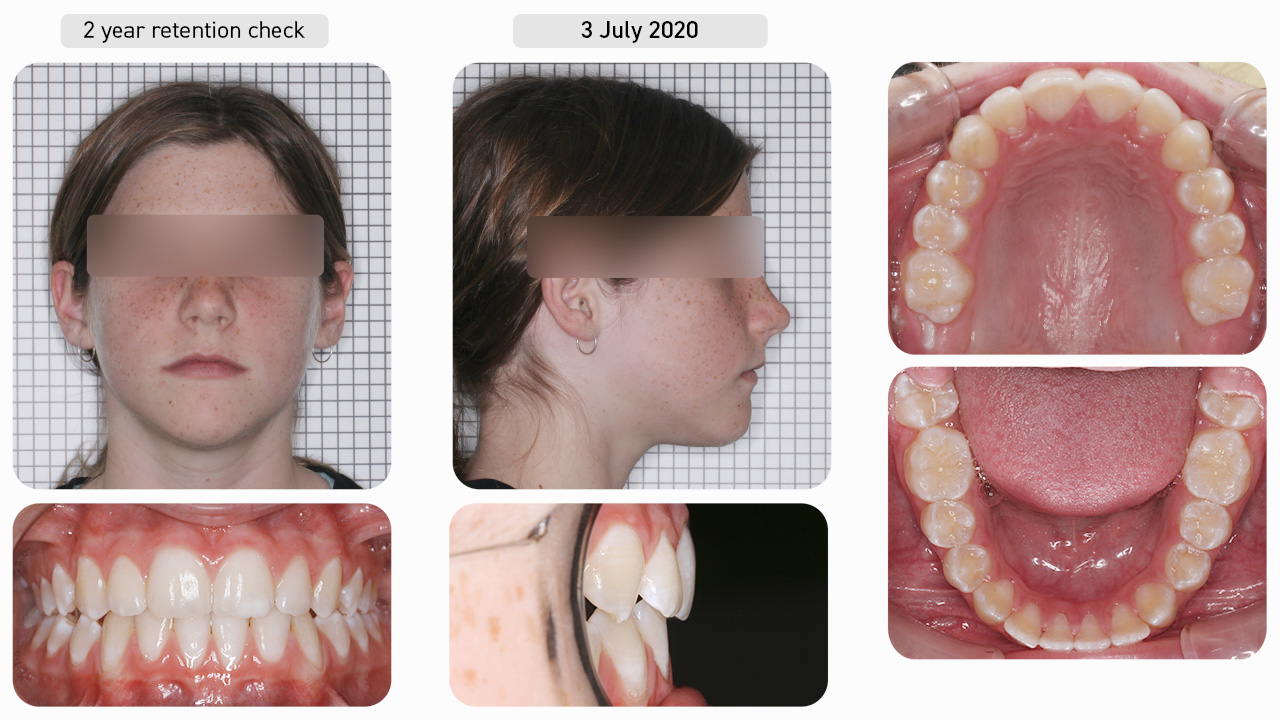
Retention
More than two years after treatment was completed, the patient returned for a retention check appointment and we can see the results have not only been maintained, but have continued to improve. With the correct breathing and muscle habits now habitual, we expect the face, teeth and jaws to continue to develop in the right direction, with good stability into the future.
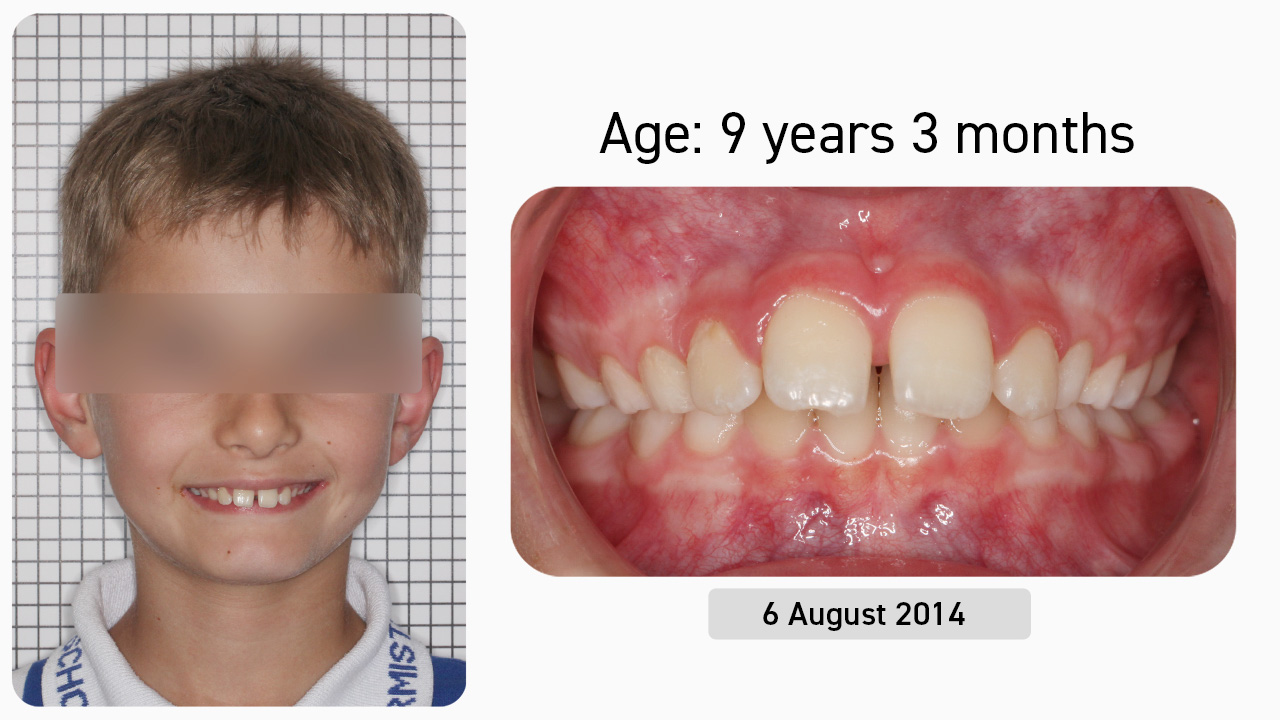
Case Study 4
This nine-year-old male patient presented with the chief complaint of incorrect jaw development and protruding front teeth. After being presented with the various treatment options, the decision was made to undertake Myobrace® treatment involving the use of the Myobrace® appliances and the Myobrace® Activities.

Pre-treatment
Using the Myofunctional Orthodontic Evaluation (MOE), we recorded that he had underdeveloped jaws, especially a retruded mandible, with flared upper incisors and mild dental crowding. The upper arch was very narrow and V-shaped, and the lower arch was flattened anteriorly. His poor myofunctional habits included mouth breathing, low tongue posture, reverse swallow and a lip trap. Since he was in the mixed dentition, his treatment began with the Myobrace®for Kids series.
Dental Progression
He started with the K1 appliance to establish nasal breathing and begin the correction of myofunctional habits. Three months later, his breathing function had improved and he was consistently retaining the K1 overnight, so he progressed onto the K2 appliance to focus on arch development and continue habit correction. You can already see the improvement in the upper arch form after only three months of treatment. The patient remained on the K2 appliance for the majority of treatment while continuing to work through the Myobrace® Activities to correct his myofunctional habits. Look at the significant reduction in overjet after 12 months of wearing the K2. Once his myofunctional habits were largely corrected, the patient was issued a T3 appliance for further dental alignment.
Dental Progression
A few months later, the patient had good alignment, so it was decided to move back to the K2 appliance while the permanent canines and premolars erupted. As more and more deciduous teeth were lost, the patient transitioned to the late mixed dentition and was issued the T2 appliance, which is more suited for this stage of dentition. Once most of the permanent teeth had erupted and the myofunctional habits were largely corrected, the patient then moved to the T4 appliance for retention.
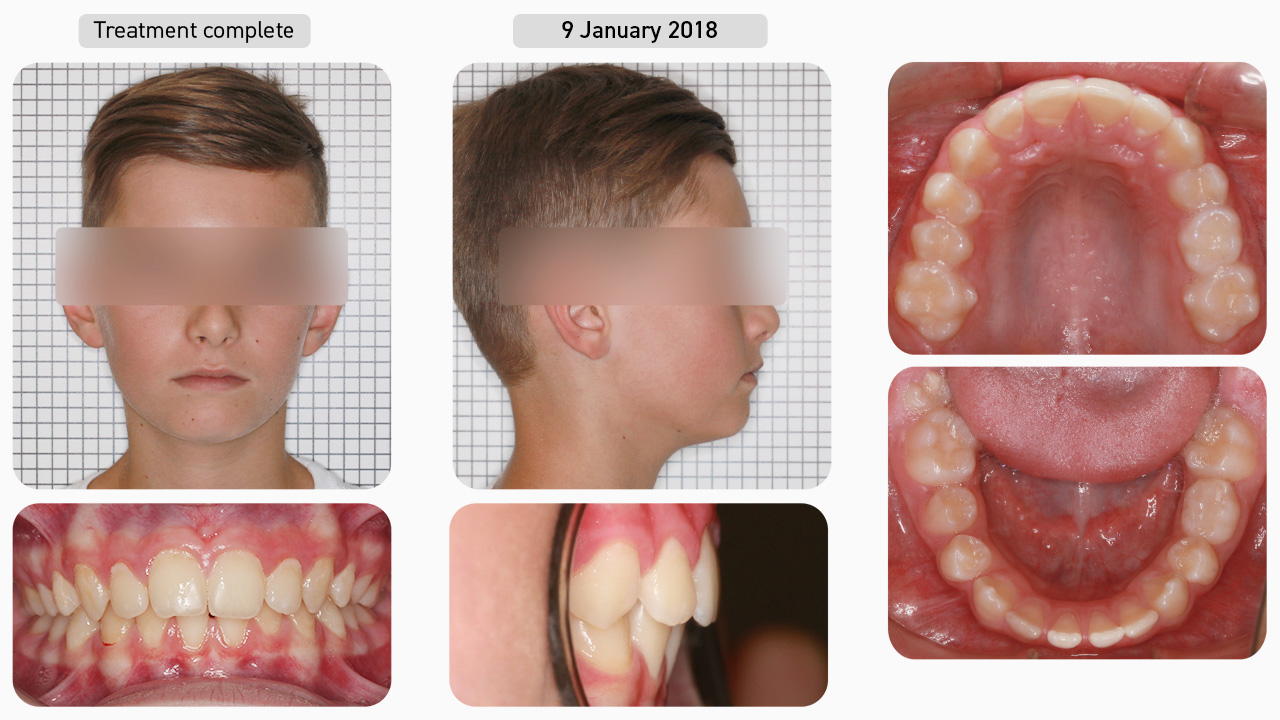
Treatment Complete
Once the goals of Myobrace® treatment had been achieved (correction of breathing and myofunctional habits, arch form and dental alignment), the patient entered into the retention phase. This involved the use of the T4 appliance to retain the arch form, alignment and habits, so he could continue to develop correctly.
Facial Progression
Once breathing and myofunctional disorders have been corrected, the development of the face continues in the correct downward and forward direction. The lip trap has been corrected and the patient is now exclusively nasal breathing and resting his lips together comfortably. As a result, the midface and lower face have developed forwards and the airway has also improved. With good breathing and myofunctional habits established, we expect the patient’s remaining development to continue in a favourable manner.
Treatment Summary
Using the Myobrace® appliances and the Myobrace® Activities, we have helped the patient establish nasal breathing, correct myofunctional habits and, therefore, achieve natural correction of the arch form and occlusion. With the correct breathing and myofunctional habits maintained, we expect the remaining adult teeth to erupt into the correct position and to see maintained stability into the future.
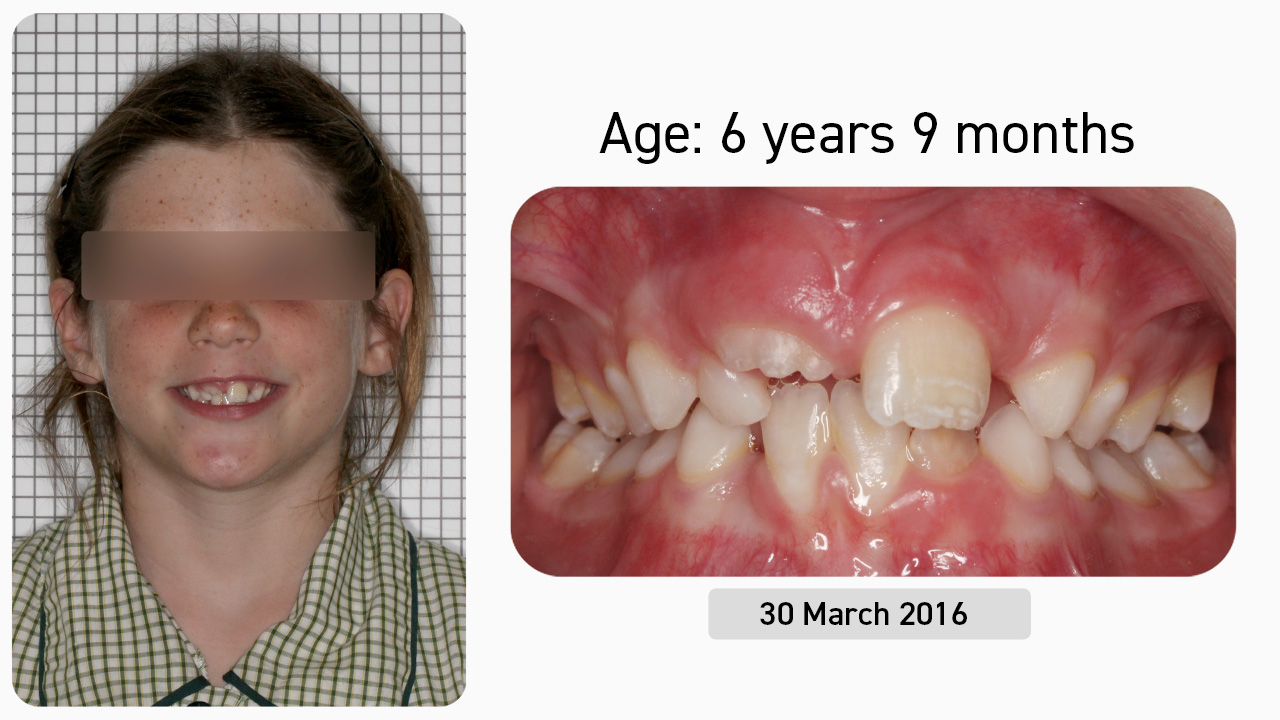
Case Study 5
This six-year-old female patient presented with the chief complaint of crowded teeth, protruding upper front teeth and noisy breathing during sleep. After being presented with the various treatment options, the decision was made to undertake Myobrace® treatment involving the use of the Myobrace® appliances, the Myobrace®Activities and, given the severity of the presenting malocclusion, the use of a BWS arch expansion appliance.
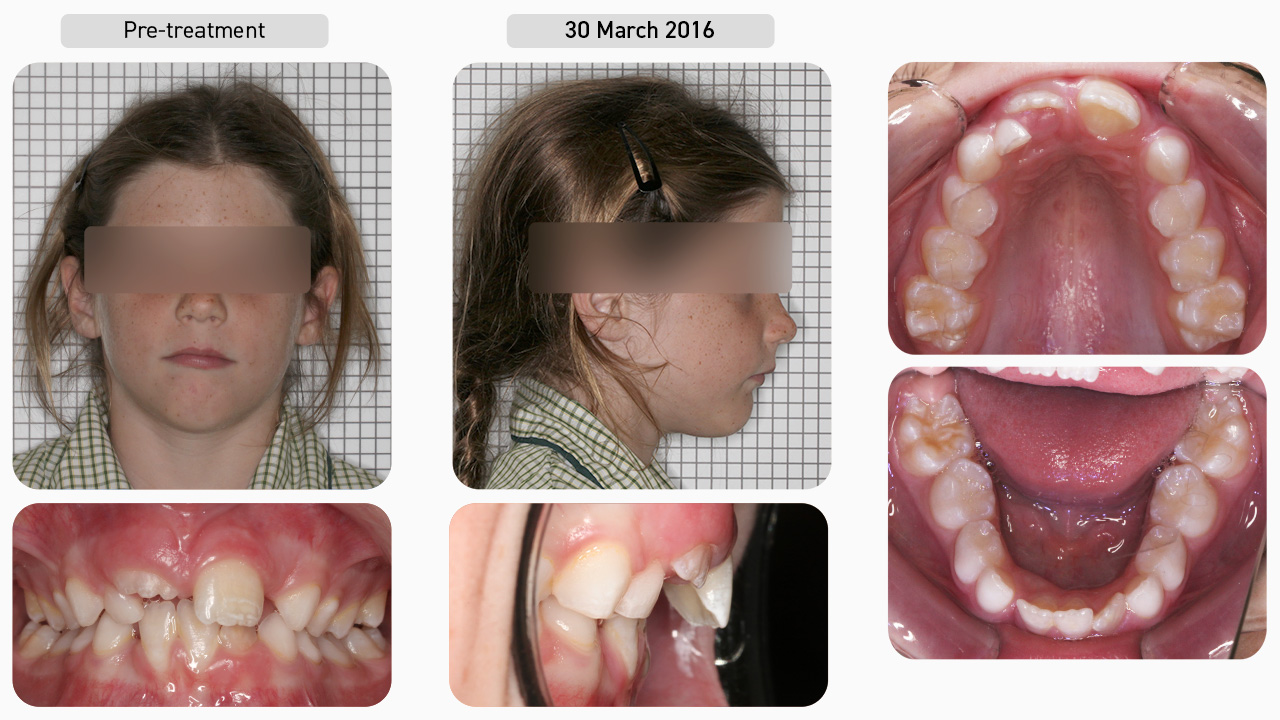
Pre-treatment
Using the Myofunctional Orthodontic Evaluation (MOE), we recorded that she had moderate to severe crowding with the lateral incisors having insufficient room to erupt. The jaws and dental arches were narrow and underdeveloped. Her poor habits included mouth breathing with a low tongue position and reverse swallow. Since the patient was in the early mixed dentition, treatment began with the Myobrace®for Kids series.
Dental Progression
She started with the K1 appliance to begin the correction of myofunctional habits and establish nasal breathing. After two months, her breathing function had improved and she was consistently retaining her K1 overnight, so she progressed to the K2, which focuses on arch development and continuing habit correction. You can already see that the overjet has improved. Due to the severe crowding, a BWS was used to enhance arch development, which must be combined with a first stage appliance, so the K1 was reissued.
Dental Progression
After four months of BWS expansion, the wire was removed and the K2 was reissued. Note the temporary increase in overjet due to development of the upper arch. This is a favourable and a temporary side effect of creating more room for the erupting teeth and tongue. After a few months of using the K2, a second round of BWS expansion was undertaken to further develop the arch form and improve function. Following this, the patient was instructed to wear her K2 again.
Dental Progression
Once the patient had developed a good arch form and her habits were mostly corrected, the T3 was used for dental alignment, followed by the T4 for retention. It’s important to note that despite the large changes achieved, there is still minor malocclusion remaining at the end. In Myobrace® treatment this is not a concern as with sustained good habits we expect the teeth to align over time, as seen above by the favourable progression through the transitional dentition.
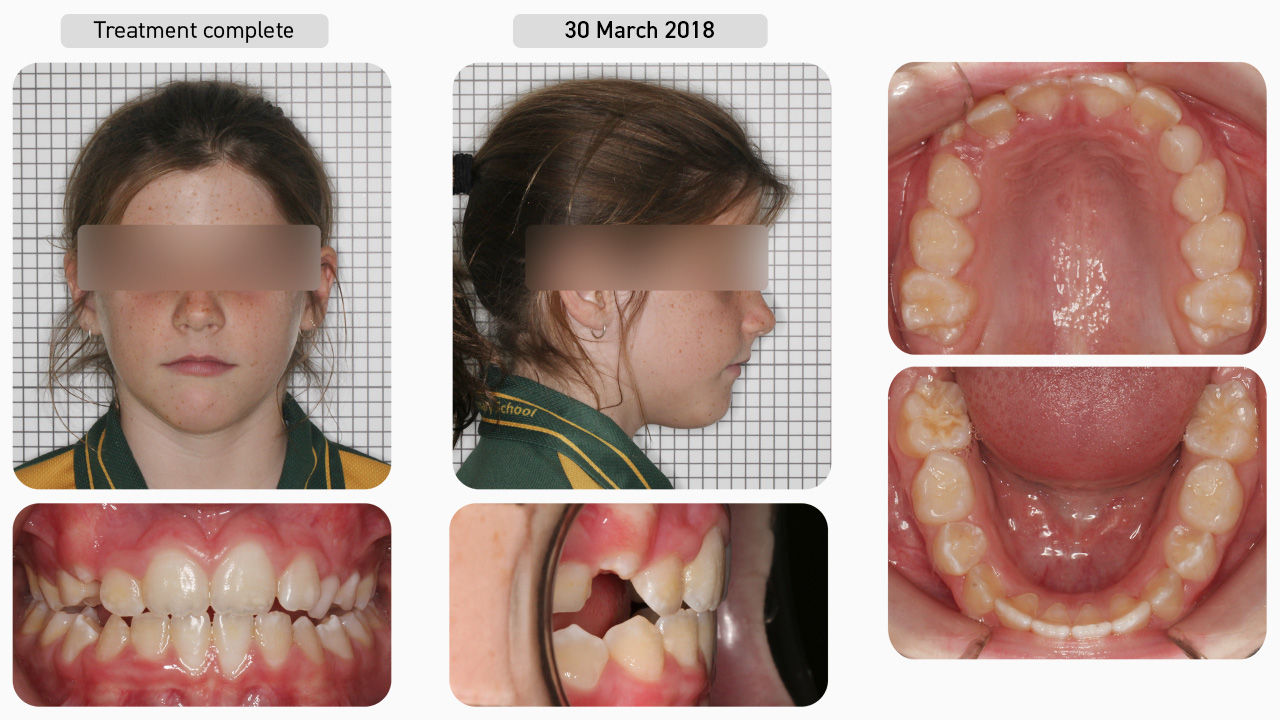
Treatment Complete
Once the goals of Myobrace® treatment had been achieved (the correction of breathing and myofunctional habits, arch form and dental alignment), the patient then entered into the retention phase. The T4 appliance was issued to retain the arch form, alignment and habits, allowing her to continue to develop correctly. We are not concerned with dental ‘perfection’ as we are looking for natural alignment, which occurs in conjunction with habit correction. Once you click through the next few retention slides, you will see this in action!
Facial Progression
Once breathing and myofunctional disorders had been corrected, the development of the face continued in the correct downward and forward direction. The buccinators reduced in their size and the labiomental crease has shallowed, both as a result of changing swallowing patterns. With the correct habits sustained, we expect this patient’s remaining development to continue in a favourable manner.
Treatment Summary
Using the Myobrace® appliances, Myobrace® Activities and the BWS, we have helped this patient to establish nasal breathing, correct their myofunctional habits and, therefore, achieve a natural alignment for their teeth appropriate for their dental development age. With the sustained correct breathing and myofunctional habits, we expect the patient to continue improving their dental development as the years go by and for stability to be maintained.
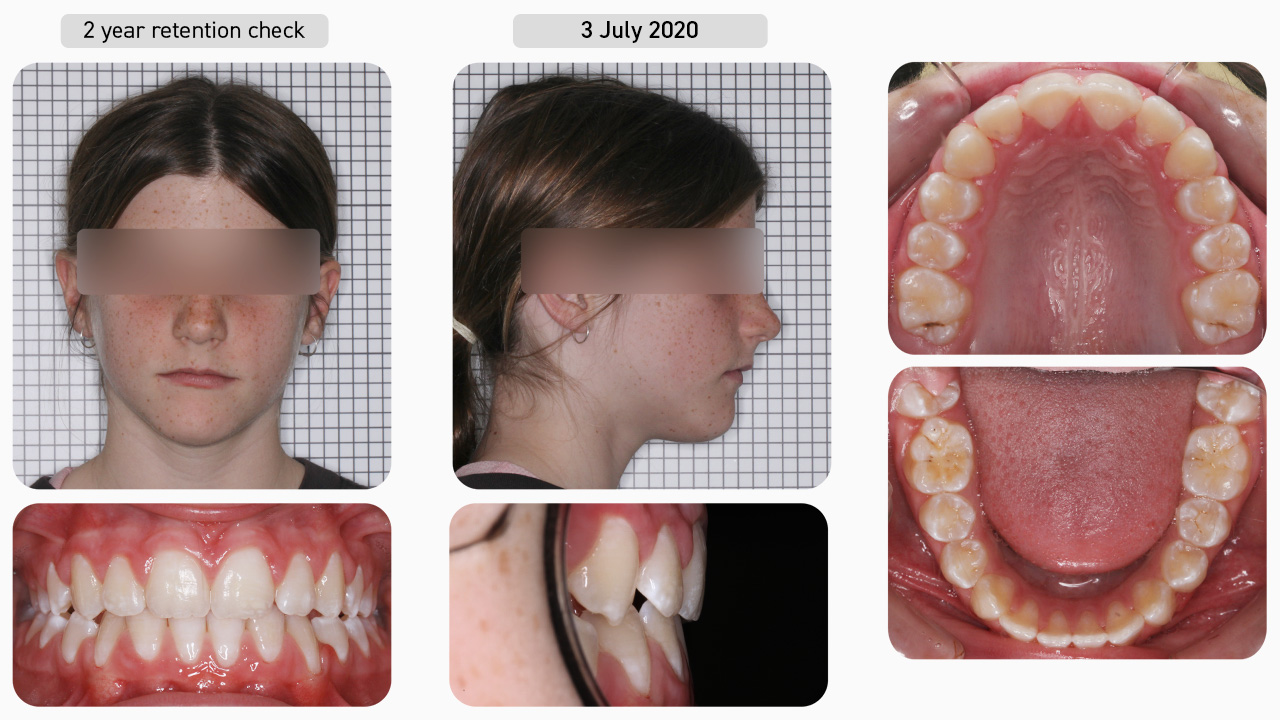
Retention
The patient's most recent retention photos, taken more than two years after treatment was completed, show that the arch form and alignment have settled and remained stable without fixed retainers. The patient's facial development has continued in a favourable manner and her clinical exam showed stability in her function. This patient will now be reviewed six-monthly until the eruption of her second molars.
Resources
Appliance Instructions
Downloadable pdf document with instructions specifically for the K3.
Download ResourceMyobrace® Appliance Catalogue
Downloadable pdf document detailing the Myobrace® appliance range.
Download Resource